Trailer light wiring is essential for ensuring safety and proper functionality when towing. This guide provides a detailed overview of the basics, key components, and best practices, covering key components like plug types and the Y-Harness, making the process manageable for DIY enthusiasts.
1.1 What is Trailer Light Wiring?
Trailer light wiring is the electrical system that connects a tow vehicle to a trailer, enabling communication between the vehicle’s lighting system and the trailer’s lights. This wiring ensures proper functionality of brake lights, turn signals, running lights, and auxiliary power. It typically involves a wiring harness and connectors like 4-pin, 5-pin, or 7-pin plugs, designed to transmit electrical signals for safety and visibility. Trailer light wiring is crucial for legal compliance and safe towing, as it ensures other road users can see the trailer’s movements. This guide provides a comprehensive overview to help understand and install trailer wiring systems effectively.
1.2 Importance of Proper Trailer Light Wiring
Proper trailer light wiring is crucial for ensuring safety, legal compliance, and optimal functionality while towing. It allows communication between the tow vehicle and trailer, enabling brake lights, turn signals, and running lights to function correctly. Improper wiring can lead to accidents, as other drivers may not see the trailer’s movements. Additionally, it ensures compliance with legal requirements for visibility and signaling. Proper wiring also prevents electrical system damage and reduces the risk of malfunctions. It enhances visibility and communication on the road, making towing safer and more efficient. Regular inspections and correct installations are essential to maintain reliability and avoid potential hazards. Proper trailer light wiring is a cornerstone of safe and legal towing practices.
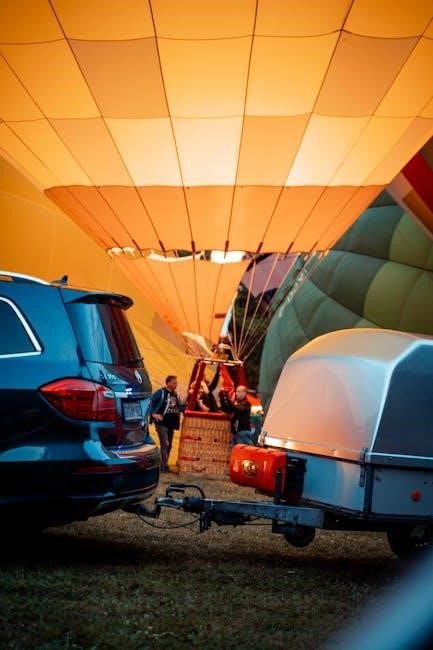
Understanding Trailer Light Wiring Basics
Trailer light wiring involves connecting plugs, understanding color codes, and using components like the Y-Harness to ensure proper functionality of lights and electrical systems for safe towing.
2.1 Trailer Plug Types (4-Pin, 5-Pin, 6-Pin, 7-Pin, 12-Pin, 13-Pin)
Trailer plug types vary based on the number of pins, each serving specific functions.4-pin plugs are common for basic setups, covering tail, brake, and turn lights.5-pin adds an auxiliary power wire.6-pin includes a separate power line for electric brakes.7-pin is standard for RVs, supporting all lights plus electric brakes and auxiliary power.12-pin and 13-pin are heavy-duty, used in Australia and Europe respectively, offering advanced connectivity for complex systems.
2.2 Wire Color Coding for Trailer Lights

Wire color coding is crucial for proper trailer light installation and functionality. Yellow wires handle left turn signals and brake lights, while green wires manage right turn signals and brakes. Brown wires are designated for tail and running lights. Red wires typically control brake lights, and blue wires are used for electric brakes. White wires serve as the ground connection, ensuring system stability. Black wires often power auxiliary devices like reverse lights. Adhering to these color standards ensures correct connections, preventing electrical issues and enhancing safety. Always consult a wiring diagram specific to your trailer plug type for accurate connections.
2.3 Differences Between 4-Way and 5-Way Wiring Systems
The 4-way wiring system is the most common for light-duty trailers, supporting basic functions like running lights, turn signals, and brakes. It uses a 4-pin connector with one pin for ground. The 5-way system adds an auxiliary power wire, typically used for trailers with surge brakes or additional electrical needs. This extra wire allows for more advanced features, making the 5-way ideal for trailers requiring auxiliary power. Both systems are compatible with standard connectors but cater to different trailer types and requirements. Choosing the right system ensures proper functionality and safety while towing. Always match the wiring system to your trailer’s specific needs for optimal performance.
2.4 Role of the Y-Harness in Trailer Wiring
The Y-Harness plays a crucial role in trailer wiring by providing a straightforward way to connect multiple lighting functions. It splits the wiring into separate circuits, ensuring power is distributed correctly to taillights, brake lights, and turn signals. This harness simplifies the installation process by consolidating wires into a single, organized system. The Y-Harness is particularly useful for trailers with multiple lighting requirements, as it eliminates the need for complex wiring setups. By using a Y-Harness, you can easily manage auxiliary power, reverse lights, and other functions, ensuring your trailer’s electrical system operates safely and efficiently. This component is essential for maintaining proper connectivity and avoiding wiring conflicts. It is a key part of modern trailer wiring systems, offering reliability and ease of use for DIY installations.
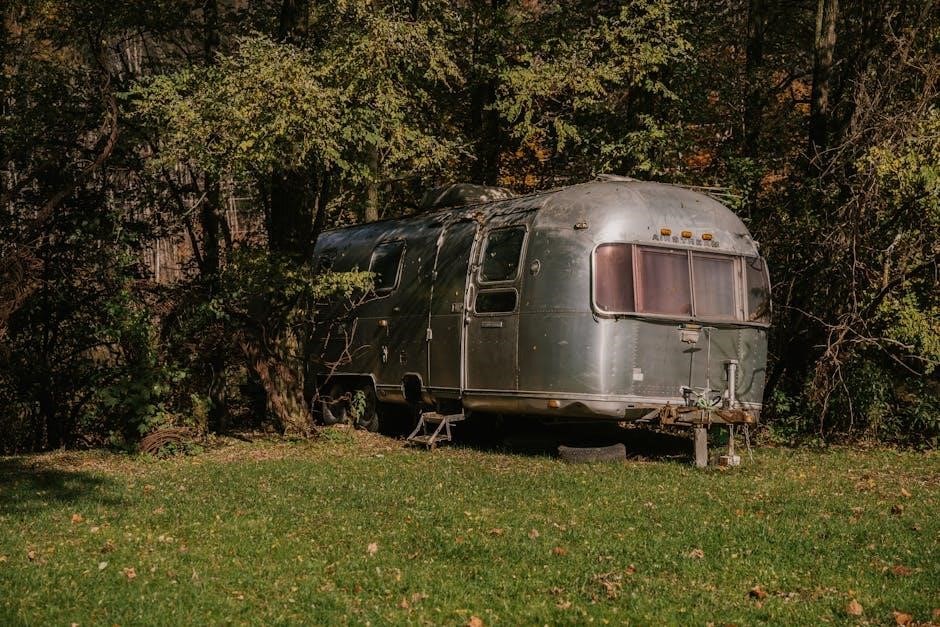
Safety Considerations and Tools Needed
Ensure safety by disconnecting power and using insulated tools. Essential tools include wiring diagrams, multimeters, and connectors. Always follow proper electrical protocols to avoid hazards and ensure reliability.
3.1 Essential Tools for Trailer Wiring Installation
Having the right tools ensures a safe and efficient trailer wiring installation. Essential tools include insulated pliers, screwdrivers, a multimeter for testing circuits, and a wiring diagram to guide connections. A voltage tester helps verify live wires, while crimping tools and heat shrink tubing ensure secure, waterproof connections. Additionally, wire connectors, electrical tape, and a utility knife are necessary for splicing and protecting wires. Proper tools prevent electrical hazards and ensure reliability. Always use high-quality materials to maintain durability and safety.
3.2 Safety Precautions When Working with Electrical Systems
Working with electrical systems requires strict adherence to safety protocols to avoid risks. Always disconnect the battery and power sources before starting, ensuring no live currents. Use insulated tools to prevent electric shocks. Properly ground the system to avoid short circuits. Never test wires with bare hands; instead, use voltage testers. Wear protective eyewear and gloves for added safety. If unsure, consult a professional to prevent potential hazards. Regular inspections and maintenance can also prevent electrical failures, ensuring safe operation.
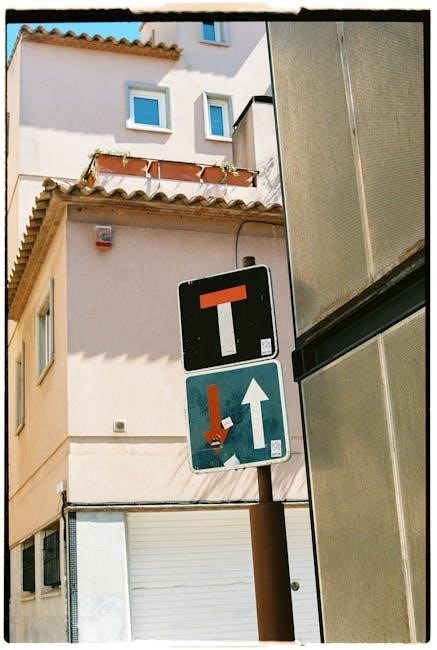
Trailer Light Wiring Diagrams

Trailer light wiring diagrams provide a clear guide for installing and maintaining electrical connections. They ensure proper functionality of brakes, signals, and lights for safe towing.
4.1 4-Pin Trailer Wiring Diagram
The 4-pin trailer wiring diagram is the most common setup, used for basic lighting functions. It includes a ground wire, running lights, turn signals, and brake lights, ensuring essential visibility and safety while towing. The diagram is straightforward, with color-coded wires for easy identification: white for ground, brown for running lights, and yellow for turn signals and brakes. This configuration is ideal for light-duty trailers, such as utility or boat trailers, making it a reliable choice for most towing needs. By following the diagram, users can ensure proper connections and functionality, avoiding common issues like faulty lights or signals.
4.2 5-Pin Trailer Wiring Diagram
The 5-pin trailer wiring diagram adds an extra wire for auxiliary power, typically used for features like reverse lights or electrical brakes. It builds on the 4-pin setup, maintaining the same color coding for ground (white), running lights (brown), and turn signals/brakes (yellow). The fifth pin, often blue, is designated for auxiliary functions. This setup is commonly used for trailers with additional electrical needs, such as those requiring backup lights or surge brakes. The diagram ensures proper connections, enhancing functionality and safety. It’s crucial to follow the wiring guide to avoid malfunctions, ensuring all lights and systems operate as intended. This configuration is versatile, catering to a variety of towing applications beyond basic lighting requirements.
4.3 7-Pin Trailer Wiring Diagram
The 7-pin trailer wiring diagram is designed for advanced setups, offering enhanced functionality. It includes connections for running lights, turn signals, brakes, auxiliary power, and reverse lights. The diagram specifies each pin’s role, with colors like white (ground), brown (running lights), yellow (left turn/brake), green (right turn/brake), blue (auxiliary), red (brake lights), and black (12V power). This configuration is ideal for larger trailers with additional electrical needs, such as RVs or those requiring hydraulic brakes. The 7-pin system ensures all components operate seamlessly, providing reliability and safety for complex towing scenarios. By following the diagram, users can effectively troubleshoot and maintain their wiring, ensuring optimal performance and avoiding potential hazards on the road.
4.4 Understanding the Y-Harness Wiring Diagram
The Y-Harness wiring diagram simplifies trailer light installation by distributing power to multiple lights from a single source. It splits the main wiring into branches, connecting taillights, brake lights, and turn signals. The Y-Harness ensures consistent power delivery, reducing the risk of electrical overload. Each branch is color-coded, with brown for running lights, yellow and green for turn signals, and red for brakes. This setup is ideal for trailers with multiple lighting points, providing a clean and organized wiring solution. The diagram clearly labels each connection, making it easier to identify and troubleshoot issues. Proper installation using the Y-Harness enhances safety and reliability, ensuring all lights function correctly for a secure towing experience.

Step-by-Step Installation Guide
Follow this guide to connect your trailer plug, wire lights, and install auxiliary and reverse lights. Ensure proper connections for safe and reliable functionality.
5.1 Connecting the Trailer Plug to the Tow Vehicle
Connecting the trailer plug to the tow vehicle is a crucial step in ensuring proper communication between the vehicle and the trailer. Start by locating the trailer plug on the tow vehicle, typically found near the rear bumper. Match the trailer plug to the corresponding receptacle on the vehicle, ensuring the correct pin configuration is used. For example, a 7-pin plug will have specific positions for power, brakes, and lights. Once aligned, insert the plug firmly into the receptacle and secure it if possible. Double-check that all lights and signals are functioning correctly by testing the brake lights, turn signals, and running lights. If any issues arise, consult the wiring diagram or consider using a wiring tester to identify and resolve the problem. Proper connection ensures safety and avoids potential hazards on the road.
5.2 Wiring the Trailer Lights (Tail Lights, Brake Lights, Turn Signals)
Wiring the trailer lights involves connecting the appropriate wires to the tail lights, brake lights, and turn signals. Begin by identifying the correct wires using the color-coded diagram. Typically, the yellow wire connects to the left turn signal and brake light, while the green wire connects to the right turn signal and brake light. The brown wire is usually for the running lights (tail lights), and the white wire serves as the ground. Use the Y-Harness to simplify the connection process, ensuring all lights are powered correctly. After wiring, test each light function to ensure they operate as intended. Proper connections are critical for safety, so double-check all wires and connections before use. If issues arise, refer back to the wiring diagram or consult additional resources for troubleshooting.
5.3 Installing Auxiliary Power and Reverse Lights
Installing auxiliary power and reverse lights enhances functionality and safety. Start by connecting the auxiliary power wire, typically blue, to the tow vehicle’s battery via a 40-amp circuit breaker. This ensures power supply to the trailer’s systems. For reverse lights, connect the dedicated wire, often purple or red, to the vehicle’s reverse light circuit. Use a relay to prevent overloading the wiring. Mount the reverse lights securely on the trailer, ensuring they are visible when in use. Finally, test the auxiliary power by checking the trailer’s interior lights and appliances, and verify the reverse lights activate when the vehicle is in reverse. Proper installation ensures reliable operation and adds convenience to your towing experience. Always follow safety guidelines to avoid electrical hazards.
5.4 Testing the Trailer Lights After Installation
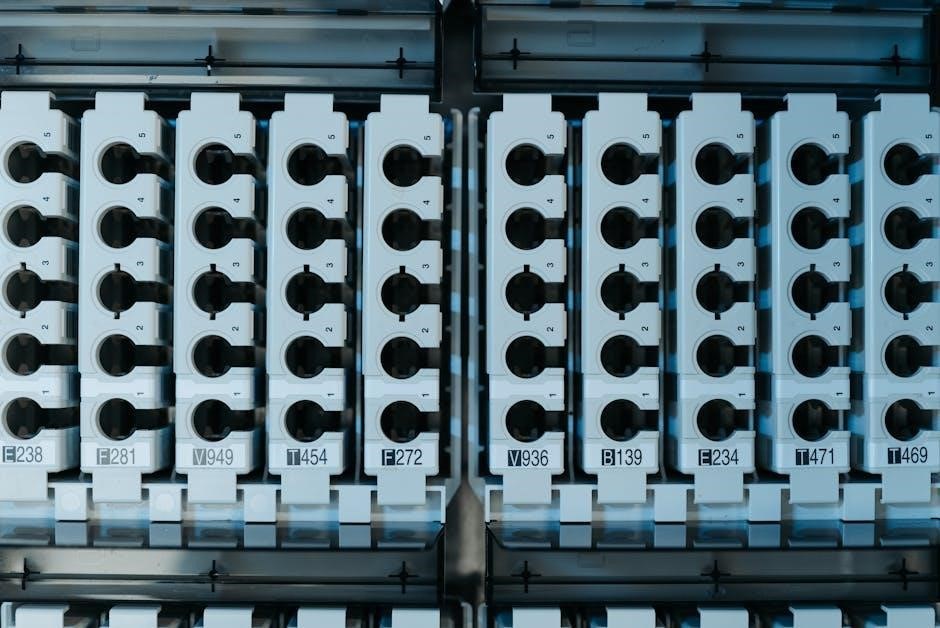
Testing the trailer lights after installation is crucial for safety and functionality. Start by turning on the vehicle’s ignition and checking each light function: running lights, brake lights, and turn signals. Ensure all lights illuminate correctly and in sync with the tow vehicle. Test the reverse lights by shifting the vehicle into reverse gear. Verify that auxiliary power, if installed, is functioning by checking interior lights or appliances. Inspect all electrical connections for secureness and proper grounding. Use a voltage tester to ensure no short circuits or power leaks. Finally, tow the trailer to a safe location and test all lights while moving to confirm reliability. Proper testing ensures your trailer is road-ready and compliant with safety standards, minimizing the risk of accidents or legal issues. Always test after installation and after any wiring modifications.
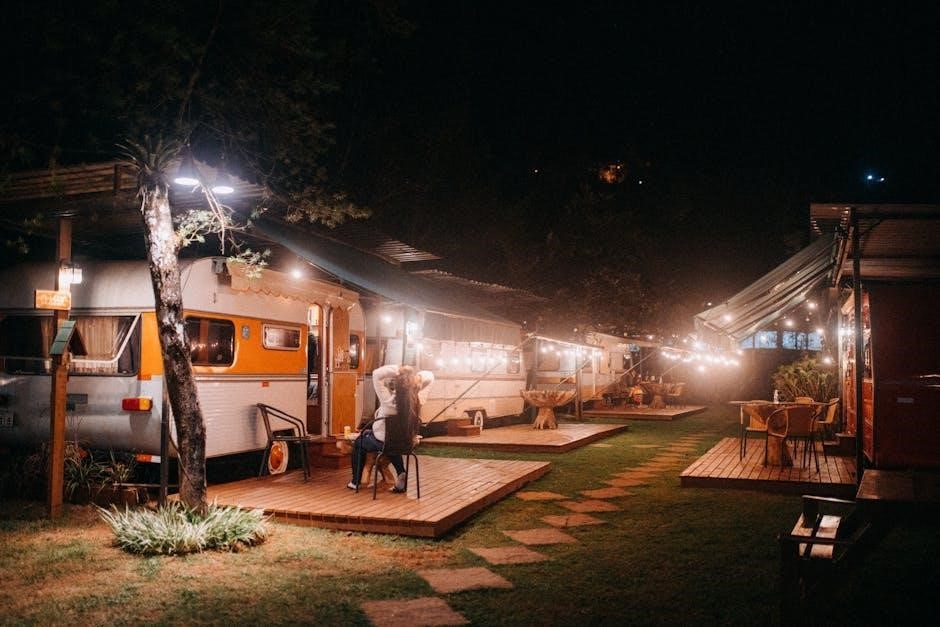
Troubleshooting Common Issues
Identify issues by testing circuits and connections. Use a multimeter to check for power and ground. Inspect for damaged wires or loose connections. Consult wiring diagrams to trace faults. Addressing problems early ensures safety and reliability.
6.1 Diagnosing Faulty Trailer Lights
Diagnosing faulty trailer lights begins with a visual inspection. Check for damaged lenses, corroded connections, or frayed wires. Test each light function individually to identify which circuits are malfunctioning. Use a multimeter to verify power at the trailer plug and ground connections. Common issues include blown fuses, faulty relays, or incorrect wiring configurations. Consult the wiring diagram to trace the circuit path and isolate the problem. For LED lights, ensure compatibility with the tow vehicle’s electrical system. Addressing issues promptly prevents further damage and ensures safe towing conditions. Regular maintenance can help prevent recurring problems. Always refer to the manufacturer’s guidelines for specific diagnostic procedures.
6.2 Fixing Common Wiring Problems
Common wiring issues often stem from corroded connections, frayed wires, or incorrect wiring configurations. Start by inspecting the trailer plug and vehicle connector for corrosion or damage. Clean or replace corroded terminals to ensure proper conductivity. For frayed wires, cut and splice in new sections, securing with heat-shrink tubing. If lights malfunction, check the wiring diagram to verify correct connections. Use a multimeter to test for power at the trailer plug and ground wires. Address short circuits by tracing the wiring harness and repairing or replacing damaged sections. Ensure all connections are secure and protected from moisture. Regularly maintaining the wiring harness can prevent many of these issues. Always test the trailer lights after making repairs to confirm functionality.
6.3 Addressing Brake Light Malfunctions
Brake light malfunctions can compromise safety, making them a priority to fix. Begin by checking the brake light fuse and ensuring the tow vehicle’s brake pedal is functioning. Inspect the wiring for damage or corrosion, especially near the trailer connector. Use a multimeter to test the brake light circuit for power and continuity. If the issue persists, examine the trailer’s brake light bulbs and replace any faulty ones. Verify the wiring connections at the trailer’s brake lights and ensure they are securely attached. Consult the wiring diagram to confirm proper connections. If the problem remains unresolved, consider replacing the brake light switch or seeking professional assistance. Always test the brakes thoroughly after repairs to ensure proper operation.
6.4 Solving Turn Signal and Running Light Issues
Turn signal and running light issues are common problems that can disrupt safe towing. Start by inspecting the wiring for any signs of wear, corrosion, or loose connections, especially at the trailer plug and vehicle harness. Use a multimeter to test the voltage at the trailer’s turn signal and running light wires. Ensure the tow vehicle’s turn signal switch is functioning correctly and that the trailer’s lights are properly grounded. Check the bulb sockets and replace any faulty bulbs. If the problem persists, consult the wiring diagram to verify the correct connections and test each circuit individually. Addressing these issues promptly ensures proper visibility and safety on the road. Regular maintenance can help prevent such problems from recurring. Always test the lights after repairs to confirm they are working correctly.

Maintenance and Inspection
Regular inspection of trailer wiring ensures reliability and safety. Check wires for damage, clean corroded connections, and test all lights. Replace worn parts promptly to avoid issues.
7.1 Importance of Regular Trailer Light Inspection
Regular inspection of trailer lights is crucial for safety and functionality. Faulty lights can lead to accidents or legal issues. Inspections help identify worn wires, corrosion, or damaged connectors, ensuring all lights function properly. Annual checks are especially vital for trailers exposed to harsh weather conditions, which can degrade wiring over time. By maintaining your trailer’s electrical system, you ensure reliable performance and avoid potential hazards on the road. This proactive approach saves time and money by addressing issues before they escalate.
7.2 Tips for Maintaining Trailer Wiring Harnesses
Proper maintenance of trailer wiring harnesses is key to ensuring long-term reliability. Protect the harness from damage by avoiding sharp bends or pinching. Regularly apply dielectric grease to connectors to prevent corrosion. Inspect wires for signs of wear or fraying and repair or replace them promptly. Avoid overstretching wires, as this can cause internal damage. Secure all connections tightly and use adhesive-lined heat shrink tubing for splices. Store the harness in a dry place when not in use to prevent moisture damage. Finally, test all lights after servicing to ensure everything functions correctly. These simple steps can extend the life of your wiring system and prevent costly repairs down the road.
This trailer light wiring guide provides a comprehensive overview to ensure safe and functional setups. Proper wiring is crucial for safety and legal compliance. Mastering these skills enhances towing confidence and ensures reliability on the road. For further learning, explore additional resources and stay updated on the latest standards and practices.
8.1 Final Thoughts on Trailer Light Wiring
Proper trailer light wiring is crucial for safety and legal compliance. Using diagrams and understanding wire color coding ensures functionality. Regular inspections and maintenance prevent issues. DIY projects are manageable with the right tools and knowledge. Always test lights after installation to ensure reliability. Addressing common problems promptly avoids hazards. Remember, correct wiring enhances visibility and communication between vehicles. Stay informed with updated standards and resources for optimal results. Safe towing begins with a well-wired system.
8.2 Additional Resources for Further Learning
For deeper understanding, explore official manufacturer guides and online forums dedicated to trailer wiring. Websites offering detailed diagrams, such as 7-pin trailer wiring charts, are invaluable. Video tutorials on platforms like YouTube provide step-by-step visual guidance. Industry standards like RP-704C from the Society of Automotive Engineers offer technical insights. Consult local regulations for compliance. Books on automotive electrical systems can enhance your knowledge. Community forums like Reddit’s DIY section often share practical tips. Always refer to trusted sources to ensure accuracy and safety in your projects. Continuous learning helps master trailer light wiring for reliable and safe towing experiences.

Leave a Reply